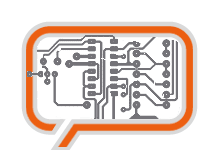A weblog focused on interesting circuits, ideas, schematics and other information about microelectronics and microcontrollers.
E-books
Disclaimer
Because I have not tested all electronic circuits mentioned on this pages, I cannot attest to their accuracy; therefore, I do not provide a warranty of any kind and cannot be held responsible in any manner.
Two DIY low-speed oscilloscopes
Do you need an oscilloscope? Are you satisfied with small display and low frequencies? Try to build your own!
The first one is Steven Cholewiak's PIC18F2550-based oscilloscope described here. Steve says: The oscilloscope measures the average voltage, the maximum voltage, the minimum voltage, the peak-to-peak voltage, and the zero-crossing frequency for a DC signal over 100 samples. The oscilloscope has a built in edge trigger function that can be set to capture on rise or fall (or disabled altogether). The time scale for the display is variable and can be easily redefined using the changeTimeDivision function. Likewise, the voltage range can be change to 0-5V, 0-2.5V, and 0-1.25V. The main limitations of this oscilloscope include relatively slow acquisition time and sampling rate (~60kHz) and the fact that the inputs are limited by the constraints of the internal ADC.
You can check the videos.
The second one is Vassilis Serasidis' AVR oscilloscope, inspired by the previous one.
Both oscilloscopes are simple and easy-to-build, uses only LCD128x64 display, microcontroller and a few discrete parts around.
